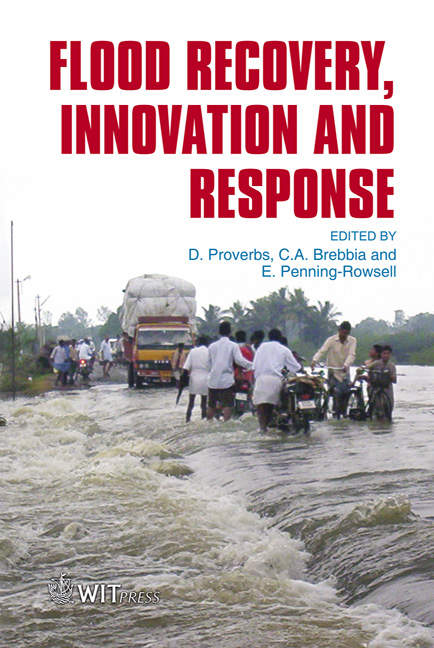Systemic Nature Of, And Diversification In Systems Exposed To, Flood Risk
Price
Free (open access)
Transaction
Volume
118
Pages
11
Page Range
91 - 101
Published
2008
Size
1,472 kb
Paper DOI
10.2495/FRIAR080091
Copyright
WIT Press
Author(s)
R. Khatibi
Abstract
The landscape of flood risk is being populated by applying the risk concept to a wide range of flood management systems against a background where rethinking is driving the shift from flood defence to flood risk management. This is in a background, where tools, concepts, systems and applications are diversifying by adapting to varying complexities. It is concerning that inherent interconnections are overlooked among systems exposed to flood risk from different sources. This paper aims to stimulate debate on interconnectivity among systems with exposures to flood risk, refers to this as the systemic flood risk, and recognises some reciprocity between interconnectivity and diversity. Keywords: flood, risk, systemic, diversity, descriptive-quantitative risk model. 1 Introduction Sources and pathways giving rise to flooding are wide, including pluvial inflows to sewer systems; fluvial flows to natural conveyance river systems; and tidal and storm surges giving rise to coastal and estuarial inundations. These sources and pathways were often studied on their own but the summer 2007 floods in the UK showed that this is no longer tenable and these sources of flooding should be considered together. For instance, the Pitt Report [1] states \“They’re all pointing the finger at each other, saying you’re responsible – one party’s blaming another.” This signifies the need for considering the various sources of flooding and their collective impacts. The paper focuses on the interconnection among systems exposed to flood risk, and refers to this as the \“systemic” flood risk. The timeline in the evolution of the concept of flood risk shows a series of generic steps, each of which would have a bearing on the systemic nature of
Keywords
flood, risk, systemic, diversity, descriptive-quantitative risk model.





